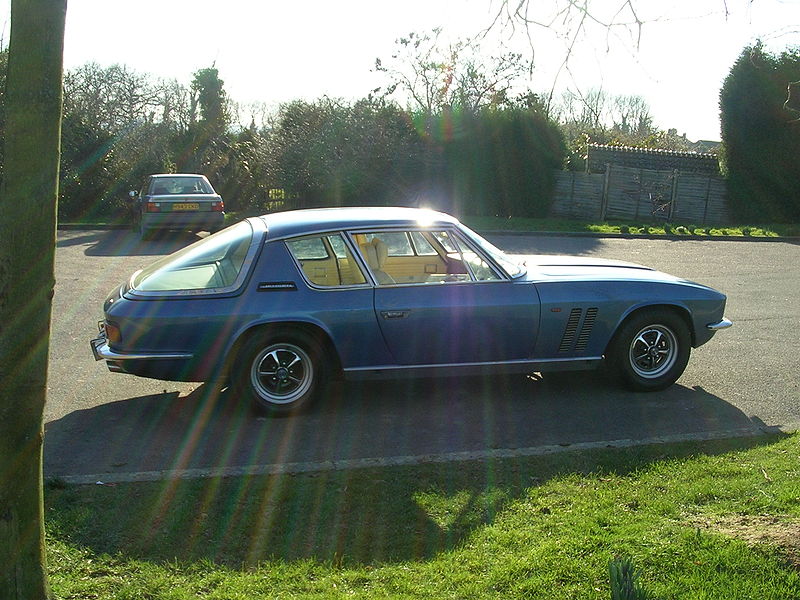Anti-lock Brakes: Who Was Really First?
All carmakers like to tout innovations or “firsts.” Often, however, we find that a similar feature or function debuted many years before. In some cases, a good idea may have arrived before the technology was truly sorted out. In other instances, lack of market acceptance caused good ideas to be shelved for years.
Our first installment in this series looks at anti-lock brakes.
Mandated today as standard equipment on all new passenger vehicles, anti-lock brakes, commonly known as ABS, had been on automotive engineers’ wish lists at least since the 1950s. One famous German carmaker has long boasted of having the first electronic four-wheel anti-skid system. But an American luxury model got there first.
Anti-skid brakes first turned up on aircraft in the late 1940s. One of those purely mechanical systems, Maxaret, was adapted to the British Jensen FF, a four-wheel-drive version of the company’s Interceptor grand touring coupe, in 1966. Just 320 FF models were built through 1971, and this right-hand-drive-only model was not exported (officially) to the U.S.
Engineers recognized that an effective automotive anti-skid system would need to have fast-acting electronic controls. Ford introduced the electronically controlled Sure-Track anti-skid system, developed by Kelsey-Hayes, for the Thunderbird and Continental Mark III in late 1969 for about $195. The Ford Sure-Track system, which worked only on the rear wheels, was made standard for the 1974 Continental Mark IV.
The “holy grail” of automotive anti-skid technology was to also prevent the front wheels from locking up in order to maintain steering control during a full-brake panic stop. That’s exactly what the Sure-Brake system for Chrysler’s 1971 Imperial offered, despite a long-standing claim by Mercedes-Benz that its Bosch ABS system was the first electronically controlled four-wheel anti-skid system to reach production (1978 in Europe).
The Mercedes system probably had an advantage with more modern digital controls, but the Imperial’s Sure-Brake system, developed by Bendix, proved effective. The Sure-Brake option cost $351.50 on the 1971 Imperial, which started at just over $6,000. The option cost was reduced to $344 for ’72 and ’73.
A story published in Popular Science in November 1970, written by respected scribe and noted spy photographer Jim Dunne, described Sure-Brake in detail. The system had a speed sensor on each wheel, and, in the trunk, an electronic control box. Sure-Brake was a three-channel system: It used one brake-pressure modulator for each front wheel and one modulator to control both rear-wheel brakes. Modulators were vacuum canisters that operated cutoff and relief valves to stop hydraulic pressure from going to the wheels.
An anti-skid system, like Sure-Brake or modern ABS, does not “pump” the brakes. Rather, as the driver maintains brake pressure, such as in a panic stop, the system releases pressure in increments as lock-up is detected.
Did it work? According to Popular Science’s instrumented test of an Imperial equipped with Sure-Brake, the system provided “firm, steady stops – even when driving on glare ice.” The article cited a dramatic 40-percent reduction in stopping distance on slippery surfaces. That was a great benefit in itself, made possible by a two-speed braking-rate capability. A mercury switch in the computer could determine the surface friction, based on the car’s rate of deceleration, and then select the appropriate pulse rate.
That “pulse rate” and its resulting clunking sound could have frightened drivers into thinking there was a brake malfunction. In fact, the editors of Road Test magazine, which also tested a 1971 Imperial with Sure-Brake, cautioned about this very situation, stating, “In an actual panic stop you hear the clunk from Sure-Brake precisely four times a second. As this could add more juice to an already panicky situation, Chrysler wisely suggests in the owners manual that you practice with the system as soon as possible after taking delivery of the car.”
Did Chrysler salesmen pass along that wise suggestion, as well? Probably not.
If measured by sales, Sure-Brake was a failure, probably going on less than 5 percent of Imperials through 1973, so just a few hundred cars per year, at most. It did not return for 1974.
Some might want to blame the option’s price for the failure, but Sure-Brake cost less than a number of the Imperial’s other extras, such as the AM/FM stereo with tape player. As was often the case with new safety features, the manufacturer and its dealers probably failed to adequately market the technology and explain its benefits to customers.
As Road Test concluded, “At the very least, Imperial should be credited for pioneering what must be the ultimate in the current state of the art of braking as practiced by Detroit.”
Do you own a 1971-1973 Imperial equipped with Sure-Brake? Tell us about it.



My 1975 Eldorado had “TrakMaster” . A thousand dollar option , offered on GM pick-ups and Cadillac only . For the rear drum brakes only . It was a superior system to others as it functioned at seventeen pulses per second . I drove it in Northern Alberta for ten winters . It was fantastic .
My Dad factory ordered a 1976 Grand Marquis wanting the Sure Trac in addition to the 4 wheel disc brake option but was told Sure Trac was discontinued I’m not sure if it ever came back From reading trucker mags at the time I believe it was discontinued due to interference caused by CB radios That’s a good thing because Dad like many had a CB
I had a 1973 Lincoln Continental with “de Carbon Anti-Lock brakes”. There was an extra brake line that teed into the rear differential and I assume that under braking it locked the rear diff, though I never had it apart to find out. I remembered the name “de Carbon” because I also had mid 1970’s Yamaha dirt bikes with “de Carbon Monoshock” rear suspension. Who was de Carbon?